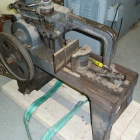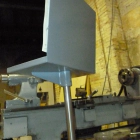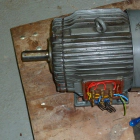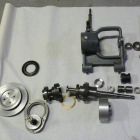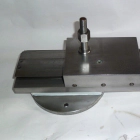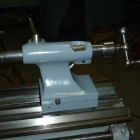This Feb 21 we have been in Juncosa (Les Garrigues) to buy an old Uniz power hacksaw. This is the smaller of several Uniz saws. It is labeled as 14in and has a 160mm cutting capacity on round bills. Built in the Basque country around the 60’s, the company ceased time ago. The saw is really sturdy with a weight of more than 300 kg. It was kindly transported by my brother Jordi.
